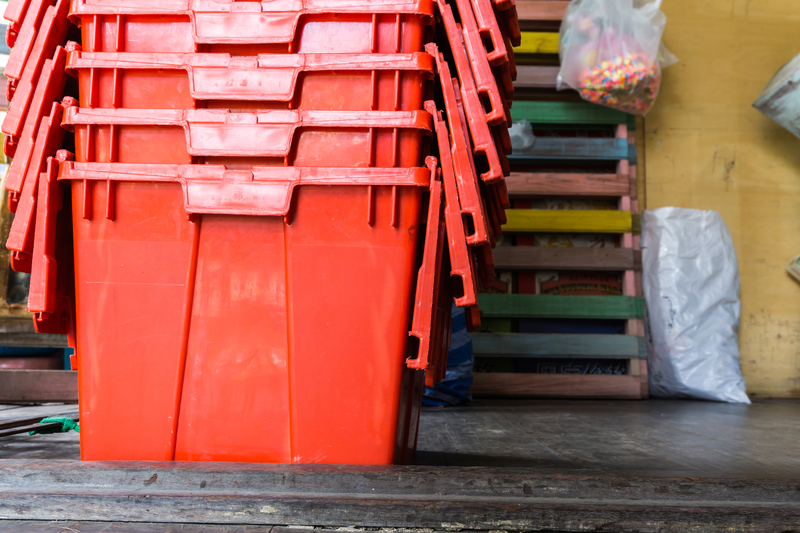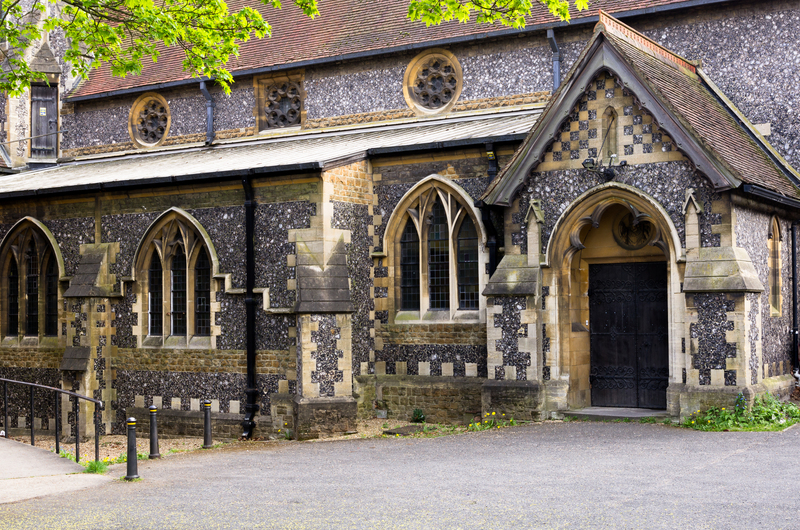The Dangers of DIY Piano Moving: A Symphony of Knowledge
Posted on 17/06/2025
The Dangers of DIY Piano Moving: A Symphony of Knowledge
Moving a piano--whether it's a delicate upright, grand, or baby grand--poses unique and significant risks. In this comprehensive guide, we orchestrate a "symphony of knowledge" about the hazards of attempting do-it-yourself piano moving and why you should think twice before tickling the ivories with your own bare hands.

Understanding the High Stakes of Piano Relocation
Pianos are not just instruments; they are intricate, heavy, and often cherished investments. If you're thinking about moving a piano without professional help, it's essential to grasp just how risky and complicated this process can be--not only for the instrument itself, but for your safety and finances as well.
The Anatomy of a Piano: More Than Meets the Eye
- Weight and Size: Even the smallest upright pianos can weigh 300-500 pounds, while grand pianos can tip the scale at 1,200 pounds or more.
- Delicate Inner Mechanisms: The intricate action, strings, soundboard, and pedals are easily knocked out of alignment by rough handling.
- Irreplaceable Value: Many pianos are family heirlooms or valuable antiques, making repairs or replacements especially tough on the wallet--and the heart.
Risks to You and Your Home: A Dangerous Overture
DIY piano moving carries multiple risks to homeowners, their environment, and helpers. What might seem like a money-saving strategy can quickly spiral out of control.
1. Personal Injury: The Most Severe Danger
Pianos are so heavy and awkward to move that injury is a very real threat. Common incidents include:
- Back Strain and Herniated Discs: Inappropriate lifting techniques can result in chronic back damage or even surgery.
- Crushed Fingers, Toes, and Limbs: Pianos can shift suddenly, trapping body parts and causing fractures or amputations.
- Severe Bruising or Lacerations: Scrapes and bruises from corners, pedals, and hardware are common when pianos slip or tip over.
Remember: What begins with a simple misstep can result in permanent injury or long-term disability. No musical note is worth your health!
2. Property Damage: Unintended Consequences
- Scratched Floors and Doors: The immense weight and awkward movement of a piano can easily scratch delicate hardwood, tile, and even carpeting.
- Broken Staircases and Railings: Attempting to carry a piano up or down stairs often leads to damaged treads, splintered railings, or even collapsed steps.
- Holes in Walls: Letting a piano lean or tip can cause punctures or structural damage to your home's walls.
3. Damage to the Instrument: Silent Tragedy
- Broken Legs and Pedals: The protruding legs and pedals of grand pianos break easily when twisted or knocked.
- Soundboard and String Damage: Rough vibrations or impact can crack a soundboard or snap precious strings, costing thousands to repair.
- Misalignment and Tuning Loss: Even if you escape visible damage, a DIY move almost guarantees you'll need a professional tuner to restore your instrument's sound.
Common Mistakes in DIY Piano Moving
Piano moving is a specialized skill. Here are missteps that even careful, strong, well-intentioned people fall prey to when attempting self-move piano strategies:
1. Improper Equipment
- Using standard dollies or furniture sliders not rated for a piano's concentrated weight.
- Omitting piano moving straps, blankets, or heavy-duty ramps.
2. Poor Planning and Execution
- Failing to measure doorways, halls, or staircases before attempting a move.
- Not disassembling fragile or removable parts (such as music stands, pedals, or legs from grand pianos).
3. Inadequate Manpower and Communication
- Attempting to "muscle" a piano with just a couple of untrained friends.
- Lack of established signals or commands to coordinate safe, smooth movement.
4. Transportation Troubles
- Attempting to move a piano in a standard car, SUV, or poorly-equipped pickup truck.
- Improperly securing the piano inside the vehicle, leading to slippage and damage during transit.
5. Inadequate Insurance
- Standard homeowner's policies rarely cover self-inflicted damage--meaning costly repairs or full replacement is out-of-pocket.
- Professional piano movers typically carry comprehensive insurance for both instrument and property.
The Expert's Touch: Why Professional Piano Movers Are Irreplaceable
Professional piano movers train extensively, utilizing specialized equipment and techniques that ensure safe, efficient, and damage-free moves. Here's why piano relocation experts are the right choice:
- Experience: Years of training in maneuvering every piano style and size through challenging spaces.
- Equipment: Heavy-duty dollies, ramps, padding, custom crates, and climate-controlled vehicles.
- Safety Protocols: Well-choreographed teamwork, spotters, and clear communication prevent accidents.
- Comprehensive Insurance: If the unthinkable happens, your losses are covered.
- Tuning and Setup: Many movers offer post-move tuning, so your instrument is performance-ready.
- Peace of Mind: Letting experts handle the risk gives you confidence and protects your investment.
Special Considerations: Stairs, Tight Spaces, and Historic Instruments
Moving a Piano Up or Down Stairs
Tackling stairs is the most treacherous aspect of piano moving. Even small errors can lead to catastrophic falls, crushed helpers, or destroyed instruments. Professional movers use specialized stair-climbing dollies, harnesses, and always work with a seasoned team.
Navigating Tight Corners and Small Spaces
Homes with narrow hallways, low ceilings, and sharp turns are especially hazardous and demand expert planning and technique. Misjudgments can easily wedge a piano, damage walls, and create dangerous situations for movers.
Moving Antique, Vintage, or High-Value Pianos
Older or more valuable pianos have unique vulnerabilities: fragile veneers, hairline cracks, and sensitive tunings. Attempting a move without expert knowledge risks irreparable harm or total destruction of irreplaceable features. Always hire a mover experienced with antique instruments.
Financial Comparison: DIY vs. Professional Piano Moving
Concerned about the cost? A professional move may appear expensive, but when you add up the potential risks and hidden expenses of a DIY piano relocation, the value is clear:
- Equipment rental (dollies, padding, ramps): $100-$300 per move
- Truck rental: $50-$150 per day
- Repair costs (flooring, walls, piano damage): $500-several thousand dollars
- Medical fees (injuries during move): Variable, can be thousands
- Piano tuning/repair post-move: $100-$700
Compare this to typical professional piano moving services ($300-$900, depending on size and distance), which include equipment, team, and insurance. Ultimately, saving a few bucks can end up costing far more than you think!
When (and How) to Hire a Professional Piano Mover
1. Do Your Research
- Check reviews and ratings, especially for successful piano moves.
- Request proof of insurance and specialized training.
2. Request a Detailed Quote
- Provide info on piano size, make, and move details (stairs, turns, distances, destinations).
3. Ask About Post-Move Services
- Some piano movers include tuning, setup, and climate controls for long-distance moves.
4. Prepare Properly
- Clear your space, measure doorways, and discuss any concerns or obstacles ahead of time.

What to Do If You Must Move Your Piano Yourself
Though it is never recommended, if you have no other choice, consider these survival tips:
- Recruit extra help--at least 3-4 strong, coordinated people.
- Rent or borrow specialized equipment (piano dolly, heavy-duty straps, moving blankets, sturdy gloves).
- Disassemble where possible (legs, pedals, and cover for grand pianos).
- Protect floors and doorways with padding and secure ramps for steps.
- Never rush the process; move slowly, communicate, and watch your footing.
- Keep children and pets safely out of the way.
- Have a first-aid kit and phone nearby in case of emergencies.
For all but the smallest and least expensive keyboards, the risks remain significant. When possible, trust your cherished instrument to trained professionals.
Conclusion: Let the Professionals Conduct Your Piano Move
In the grand performance that is moving a piano, DIY piano moving dangers create a cacophony of potential disasters. From crushed toes to destroyed family treasures and unexpected expenses, the risks dramatically outweigh the rewards. Entrusting professionals to move your piano is the only truly safe, reliable, and cost-effective solution.
When the time comes to relocate your upright, baby grand, or concert grand, remember: Don't try to play every note yourself. Let experienced, reputable piano moving professionals handle the heavy lifting, and keep your symphony of music in perfect harmony for years to come.
Ready for a safe, harmonious move? Contact a professional piano mover near you today and let your instrument's adventure hit all the right notes!





